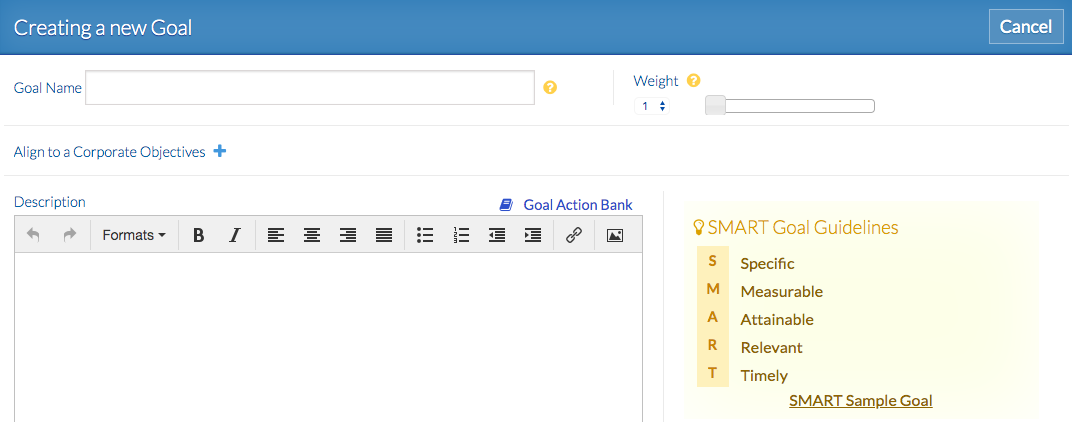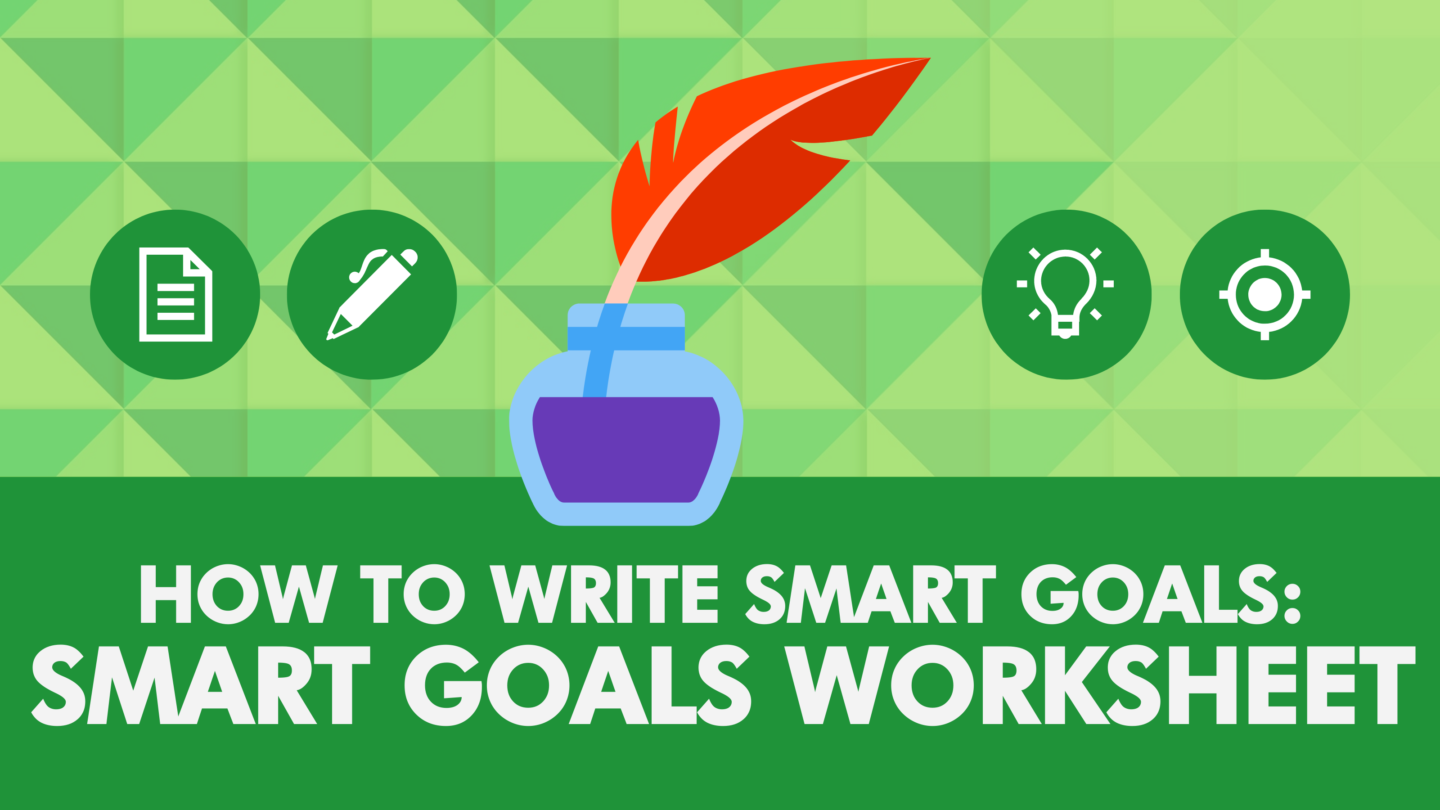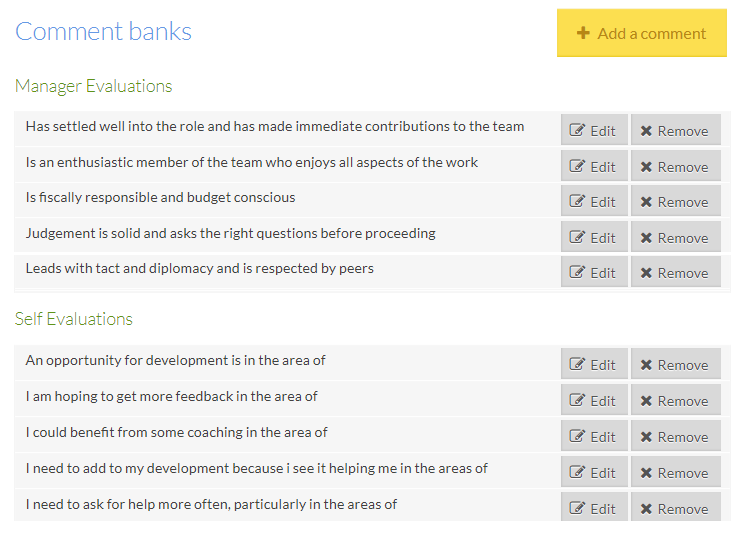
How to Write SMART Goals
A Simple SMART Goals Worksheet
What Are SMART Goals?
SMART Goals follow a structure that increase the chances of success by asking the important questions right from the get go.
Simple Goal Example
To teach data security best practices to all employees.
SMART Goal Example
IT department will develop and roll out a data security training program by Jan 31, 2020. 100% of employees will be trained and will be required to achieve a “pass” on a post-training, data security quiz by March 31, 2020.
SMART Goals possess clear and specific information pertaining to the goal. So, how exactly do you decide what should be included in your SMART Goal?
You follow the SMART Goal process.
Creating a SMART Goal is a process. You have to consider each element sequentially in order to create an effective SMART Goal.
Specific
Measurable
Attainable
Relevant
Timely
Let’s break down each of the components of a SMART Goal.
Specific
A SMART goal should define as specifically as possible what you intend to accomplish. In order to be specific, it helps to consider each of these factors;
What → What exactly are you trying to accomplish?
Why → Why do you want to accomplish it?
Who → Who needs to be involved in order to achieve this goal?
Where → In what location is this to take place? This may vary depending on whether the goal is group oriented or individual.
When → When should this goal be accomplished by? We’ll elaborate in the Timely section.
Don’t worry, we haven’t forgotten about the When, we’ll address it shortly,
Measurable
How will you measure progress of your goal? How will you know when you’ve successfully attained your goal? It’s important to think about the metrics that you will use to monitor how things are moving along. This allows you to track your progress toward a goal, and make any adjustments necessary if things aren’t progressing as intended.
Attainable
Is the goal attainable with your current skills and resources? If not, can you obtain these requirements? There’s nothing wrong with setting ambitious goals, but it’s crucial that they are also realistic. It’s worth spending some time considering what is required in order to make your goal reasonably attainable.
Relevant
Is your goal relevant and worth pursuing? How will the completion of your goal be beneficial for your company? How does your goal align with overall company objectives? It may seem obvious, but it’s important to ensure that your goal is something that is worth allocating time and resources to at the present time.
Timely
As promised, here we are addressing the when. When do you intend for this goal to be achieved? Creating a realistic time frame and sticking to it is a crucial part of setting a SMART goal.
If the completion of your goal is intended to take place over an extended period of time, it may be worthwhile to break your time frame down into mile stones. Perhaps you intend to achieve your goal 6 months from now. What milestone can you achieve 1 month from now? How about 3 months from now?
Why Use SMART Goals?
Not all goals are created equally. Setting a goal can be largely ineffective if it’s vague or difficult to measure your progress. Following the SMART Goal process ensures that you’re putting yourself in the best position to successfully achieve a meaningful goal.
What about OKRs?
OKRs (Objectives & Key Results) are an alternative means by which to organize goals. Whether you use SMART Goals or OKRs comes down to personal preference.
Using a SMART Goals Worksheet
When it comes to setting SMART Goals, there’s no need to reinvent the wheel. The best, and easiest way to write SMART goals is to follow a simple worksheet!
You can grab our straight-forward worksheet as a PDF, Excel or Word document;
SMART Goals Examples
Let’s walk through the process of taking a regular old goal and making it SMART. You can follow along on our SMART Goals Worksheet!
SMART Goal Example 1
Let’s take a look at our simple and SMART goal examples from earlier. Here’s an idea of how the process works to develop a SMART Goal.
SIMPLE GOAL
Start with a simple goal, and then we’ll make it SMART!
To teach data security best practices to all employees.
S - Specific
What do you want to accomplish? Why do you want to accomplish it? Who should be involved? Where will this take place?
- I want to successfully train all employees to adhere to our data security best practices expectations.
- I want to accomplish this to ensure the security of our company and client data.
- Myself and the rest of the IT department should be involved.
- Training will take place in person during team meetings or virtually by shared presentation.
M - Measurable
How will you measure progress of your goal? How will you know when you’ve successfully attained your goal?
- The first measurable milestone is the successful creation of the training program.
- Progress toward the goal can be measured by tracking the successful completion of a data security quiz by employees.
- The goal will be considered to be completed when all employees have passed the data security quiz.
A - Attainable
Is the goal attainable with your current skills and resources? If not, can you obtain these requirements?
- We possess the skills and resources to create an effective training program.
- If difficulties are encountered, we can speak to employees outside of the IT Department to gain insights on levels of understanding pertaining to complex topics.
R - Relevant
Is this goal aligned with overall objectives? Is this goal a current priority?
- This goal aligns with overall company objectives and is consistent with the reputation that we wish to uphold.
- Ensuring company and client data security is a top priority.
T - Timely
When do you hope to achieve this goal by? When’s the target? When’s the deadline?
- The training program should be completed by Jan 31.
- The employee training and successful completion of the data security quiz should be achieved by the end of quarter 1, 2020.
SMART GOAL
Rewrite your “Simple Goal” as a “SMART Goal”. Make sure that your SMART goal is Specific, Measurable, Attainable, Relevant and Timely
Company and client data security is of critical importance and aligns with core company goals. As such, the IT department will create a data security training program by Jan 31, 2020. All employees will be trained and successfully pass a data security quiz by March 31, 2010.
As you can see, the SMART Goal is much more specific and clearly conveys the purpose and expected result of the goal.
Your final SMART goal doesn’t need to excessively long! It’s intended to be a summary of the thought process that you went through to get there.
SMART Goal Example 2
Let’s walk through another goal. This time we’ll focus on an individual goal.
SIMPLE GOAL
Start with a simple goal, and then we’ll make it SMART!
Learn how to effectively write JavaScript.
S - Specific
What do you want to accomplish? Why do you want to accomplish it? Who should be involved? Where will this take place?
- To learn enough JavaScript to write basic web applications for my company website by taking an online course.
- To add value to my company and my own skillset.
- Only I will be involved in this self-guided course.
- I will complete this course from my company computer, at my work station.
M - Measurable
How will you measure progress of your goal? How will you know when you’ve successfully attained your goal?
- Progress will be tracked via % completion of online course modules.
- Goal will be successfully attained when I finish the course and receive the certificate.
A - Attainable
Is the goal attainable with your current skills and resources? If not, can you obtain these requirements?
- I have all of the course prerequisites, and am highly motivated.
- If I experience difficulties, I can request help from a professional.
R - Relevant
Is this goal aligned with overall objectives? Is this goal a current priority?
- This goal aligns with an overall company objective to increase user engagement and retention on our website.
T - Timely
When do you hope to achieve this goal by? When’s the target? When’s the deadline?
- By dedicating 2 hours per day to this course starting in January, I hope to complete my certification by the end of quarter 1.
- I will achieve this goal by March 31st, 2020.
SMART GOAL
Rewrite your “Simple Goal” as a “SMART Goal”. Make sure that your SMART goal is Specific, Measurable, Attainable, Relevant and Timely
To complete an online JavaScript course by March 31st, 2020 in order to learn how to build web applications to increase user interaction and retention for our company website.
Following the SMART Goal process helps to really nail down an exact course of action, even in the case of individual or personal development goals.
SMART Goals in Practice
You know what’s even easier than using a worksheet or template to set SMART Goals? Using a performance management platform with built in SMART Goal setting assistance!
Sprigg helps you set SMART Goals that align with corporate objectives and offers an easy way to track the progress of all of your goals, whether they are individual or team oriented!

Interested in learning more about our SMART Goal features?
We would love to introduce you to Sprigg. Hit the “Request a Demo” button and we'll customize a demo just for you, led by one of our senior HR professionals. We look forward to connecting!





